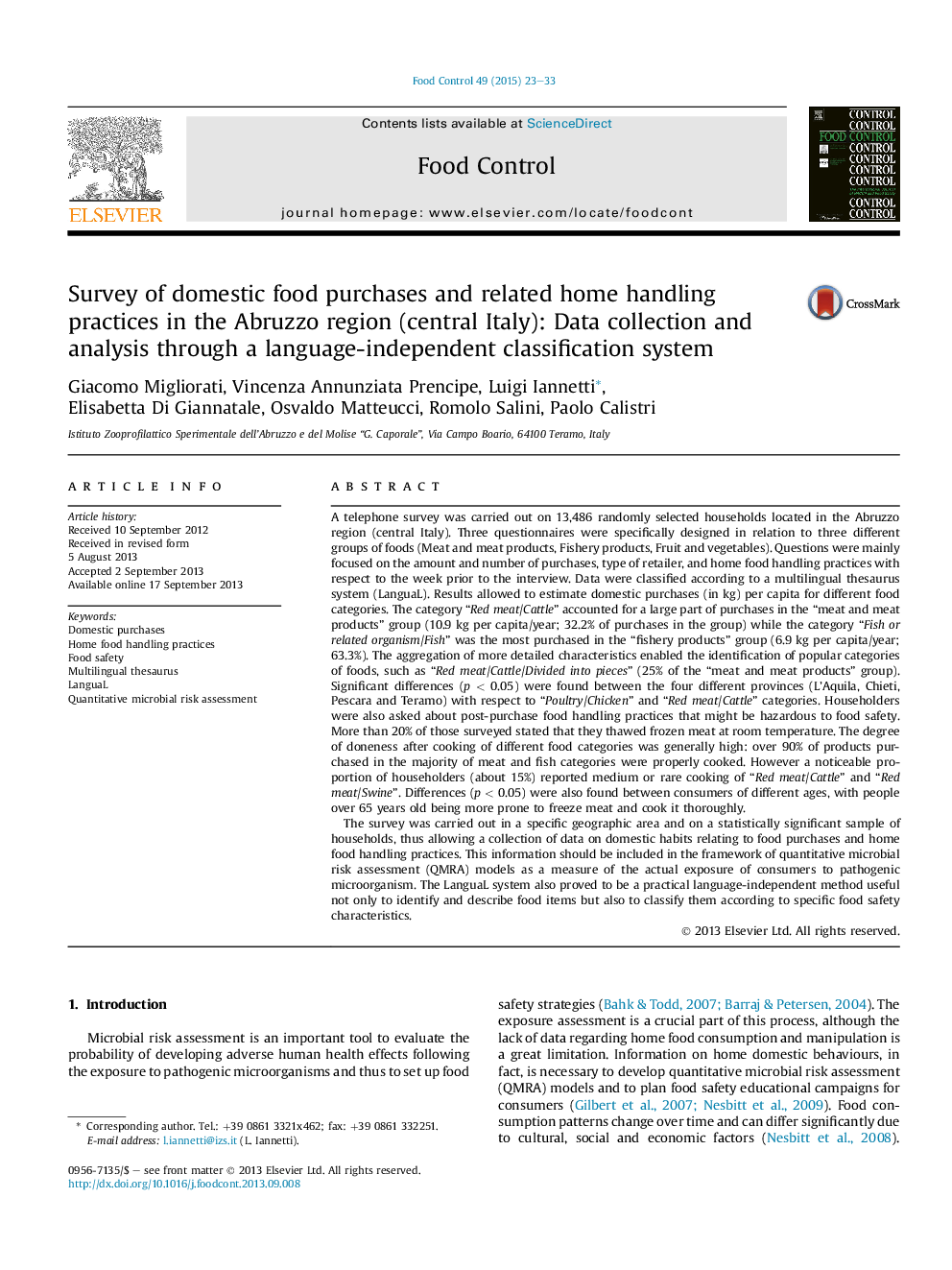| Article ID | Journal | Published Year | Pages | File Type |
|---|---|---|---|---|
| 4559318 | Food Control | 2015 | 11 Pages |
A telephone survey was carried out on 13,486 randomly selected households located in the Abruzzo region (central Italy). Three questionnaires were specifically designed in relation to three different groups of foods (Meat and meat products, Fishery products, Fruit and vegetables). Questions were mainly focused on the amount and number of purchases, type of retailer, and home food handling practices with respect to the week prior to the interview. Data were classified according to a multilingual thesaurus system (LanguaL). Results allowed to estimate domestic purchases (in kg) per capita for different food categories. The category “Red meat/Cattle” accounted for a large part of purchases in the “meat and meat products” group (10.9 kg per capita/year; 32.2% of purchases in the group) while the category “Fish or related organism/Fish” was the most purchased in the “fishery products” group (6.9 kg per capita/year; 63.3%). The aggregation of more detailed characteristics enabled the identification of popular categories of foods, such as “Red meat/Cattle/Divided into pieces” (25% of the “meat and meat products” group). Significant differences (p < 0.05) were found between the four different provinces (L'Aquila, Chieti, Pescara and Teramo) with respect to “Poultry/Chicken” and “Red meat/Cattle” categories. Householders were also asked about post-purchase food handling practices that might be hazardous to food safety. More than 20% of those surveyed stated that they thawed frozen meat at room temperature. The degree of doneness after cooking of different food categories was generally high: over 90% of products purchased in the majority of meat and fish categories were properly cooked. However a noticeable proportion of householders (about 15%) reported medium or rare cooking of “Red meat/Cattle” and “Red meat/Swine”. Differences (p < 0.05) were also found between consumers of different ages, with people over 65 years old being more prone to freeze meat and cook it thoroughly.The survey was carried out in a specific geographic area and on a statistically significant sample of households, thus allowing a collection of data on domestic habits relating to food purchases and home food handling practices. This information should be included in the framework of quantitative microbial risk assessment (QMRA) models as a measure of the actual exposure of consumers to pathogenic microorganism. The LanguaL system also proved to be a practical language-independent method useful not only to identify and describe food items but also to classify them according to specific food safety characteristics.
